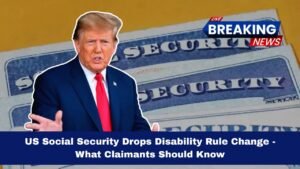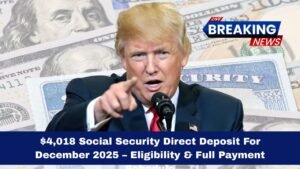The idea of a $2,000 “tariff dividend” has gained traction in Washington as part of a broader economic strategy. Under this proposal, the federal government would use revenue from import tariffs to fund rebate payments to eligible Americans.
The goal: share some of the revenue collected from trade policy with U.S. households, and send a clear message that tariffs are benefiting families.
At this stage, however, the plan is not yet provided to all Americans, and several major hurdles remain. We’ve got to examine who qualifies, when the payments might come, and what stands in the way. Let’s break it down.
Timeline & Key Figures
Here’s a snapshot of the current status of the tariff dividend discussions:
| Item | Latest Details | Take-Away |
|---|---|---|
| Proposed amount | $2,000 per person (or at least per adult) | The headline figure likely to stick |
| Eligibility income cap | Under $100,000 annual household income being considered | This would target ~60% of U.S. households |
| Target rollout | Earliest: mid-2026 (with echoes of 2025 or late 2025) | Not a near-term payment for most yet |
| Estimated cost | Roughly $150-300+ billion, possibly up to $450 billion if broadly applied | Funding remains a major question |
| Current tariff revenue | Roughly $100-200+ billion expected in 2025 | Revenue may not cover broad payout without legislation |
Who Could Be Eligible for the Tariff Dividend?
Key eligibility factors being discussed include:
- U.S. citizenship or legal resident status
- Household income below a certain threshold (e.g., under $100,000)
- Claims suggest that roughly 59-60% of households might qualify if the cap is set at that level
- Adults would be first priority; children’s inclusion is still uncertain
- Payment method would mimic past stimulus checks via direct deposit or tax rebate
In short, the focus is on the middle-class and below, rather than high-income earners, which would preserve the narrative of a “dividend” rather than a wholesale universal payout.
Why the Delay—and What’s Standing in the Way?
Several major issues are holding the plan back from immediate execution:
- Legal questions: Many of the tariffs that generate the revenue are under legal challenge, including via the Supreme Court of the United States. If the tariffs lose or are rolled back, the revenue base could vanish.
- Congressional action required: The plan needs either new legislation or an executive re-allocation of funds, both of which take time and political consensus.
- Revenue vs. cost mismatch: Estimates of cost far outstrip current tariff revenue unless eligibility is sharply limited or payout reduced.
- Inflation/price concerns: Critics argue a large payout could re-ignite inflation or negate the benefits of lower consumer prices from trade policy.
- Implementation issues: Administering large checks, ensuring accurate eligibility, and preventing fraud are all logistic hurdles.
Because of these, many experts expect that even if the plan passes, payments will likely arrive in 2026 rather than late 2025 for the majority of recipients.
Why the Tariff Dividend Strategy?
The rationale behind this approach includes:
- Framing tariffs as directly beneficial to Americans, not just a trade tool.
- Offering tangible relief to middle-income families in the face of rising costs of living.
- Leveraging a novel concept of tax/fee revenue rebate (as opposed to borrowing).
- Providing political messaging advantage ahead of upcoming elections.
By calling it a “dividend,” the message shifts from government hand-out to government sharing revenue.
The $2,000 tariff dividend remains a compelling idea—but at this moment it’s still a proposal, not a guarantee. With legal, legislative, and financial obstacles ahead, it’s unlikely that most Americans will see the payment before mid-2026.
If you fall under the likely eligibility criteria—household income below roughly $100,000, U.S. household resident—you could be in line. But keep in mind: nothing is final until Congress acts, and the actual payout could be smaller, delayed, or otherwise changed.
Stay updated, keep your tax records current, and monitor official announcements.
FAQs
When will the $2,000 tariff dividend actually be paid?
While the target is a check around mid-2026, some discussion hints at late 2025—yet official confirmation is still lacking.
Who is likely to qualify for the tariff dividend check?
Eligibility is expected to focus on U.S. households earning under about $100,000 per year, with the plan covering roughly 60% of households.
Is the tariff dividend program guaranteed to happen?
No—the plan depends on tariff revenue, legal rulings, and Congressional authorization. Until legislation passes and funding is secured, it remains speculative.




